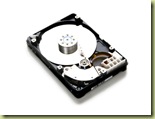 Recently a friend and I experienced similar computing “disasters. We both had iMacs that were approximately 3 years old and both of them experienced hard drive failures. Don’t draw any conclusions about the reliability of the iMacs as that isn’t the point of this article.
Recently a friend and I experienced similar computing “disasters. We both had iMacs that were approximately 3 years old and both of them experienced hard drive failures. Don’t draw any conclusions about the reliability of the iMacs as that isn’t the point of this article.
A conclusion that is fair to draw is that hard drives fail. It’s not if they will fail, it’s when they will fail that we need to keep in mind.
Both of us are very accomplished computer “geeks”. My friend has been a Mac aficionado for many years and runs his very successful business with his wife on Mac computers. I have been a Windows “guy” since the days of DOS computers and only in the past three years have I become a Mac “convert”. But, again, it’s not the computing platform that is the topic today.
The topic is simply this: your hard drive WILL fail and when it does, it will take all of your data with it. When that happens and you are sitting staring at folder with a question mark (Mac) or staring at the blue screen of death (Windows) the result is the same…you are hosed. (Hosed is a technical term that means you get to spend the next few days working like a dog to get your computer back!)
My friend has a very good plan for backing up data, he has multiple portable drives that he uses for backup. He rotates them daily, exchanging a drive each day and taking the unused drive with him off site. This is so that if the backup drive and the main computer hard drive fail, the worst that can happen is that he only loses data from the current day. (He has “yesterday’s” backup drive off site).
My plan was less robust. I relied on the Mac Time Machine backup program that was backing up to an external hard drive sitting on the desk. I didn’t rotate drives like he does.
So, when the inevitable happened, we both thought that we were covered. All we would have to do was to replace the failed hard drive in our iMacs and restore data from the most current hard drive.
In my friend’s words “Not so fast Grasshopper!” It didn’t work that way for either of us. You see, we both failed to close the “loop”. It doesn’t matter how many backup drives you have stashed away somewhere if the data that they contain is corrupt as it was in his case. It also doesn’t matter if the backup drive you have doesn’t have a recent backup on it because the backup settings were changed and the computer wasn’t backing up as it was in my case.
In both cases, a simple, periodic RESTORE of critical data (and actually opening the file to verify it’s integrity) would have spotted his corrupt data and my utter failure to actually be backing up!
The story has a happy ending. We were both able to recover data from our failed hard drives and we are both back in business. But, the process stole time and money from both of us.
It’s time for you to check your own data backups…what are you doing, and how do you KNOW that you can get the data when you need it? Have you done any restores? Have you checked the restored file to see if you can actually open and read it?
Discover more from RealtyTechBytes.com by Jerry Kidd
Subscribe to get the latest posts sent to your email.








Very true Jerry. But if you think your iMac hard drive has failed you may still be in for good news. I thought mine had gone but it turned out to be a small chip that had been melted by the heat generated within the iMac body. Back ups are vital but so are second opinions sometimes.
True, but in this case the diagnostics told the tale and the new hard drive proved the point when I installed it!
time for Carbonite cloud backup
Nope. I disagree. Carbonite or Mozy are great as a secondary backup. But, not as a primary. They take too long to accomplish an initial backup and waaaaay too long to do a full restore.And even if it was your primary backup, you still MUST do periodic restores to verify if you are actually backing up valid data. That's the point of the article. 🙂